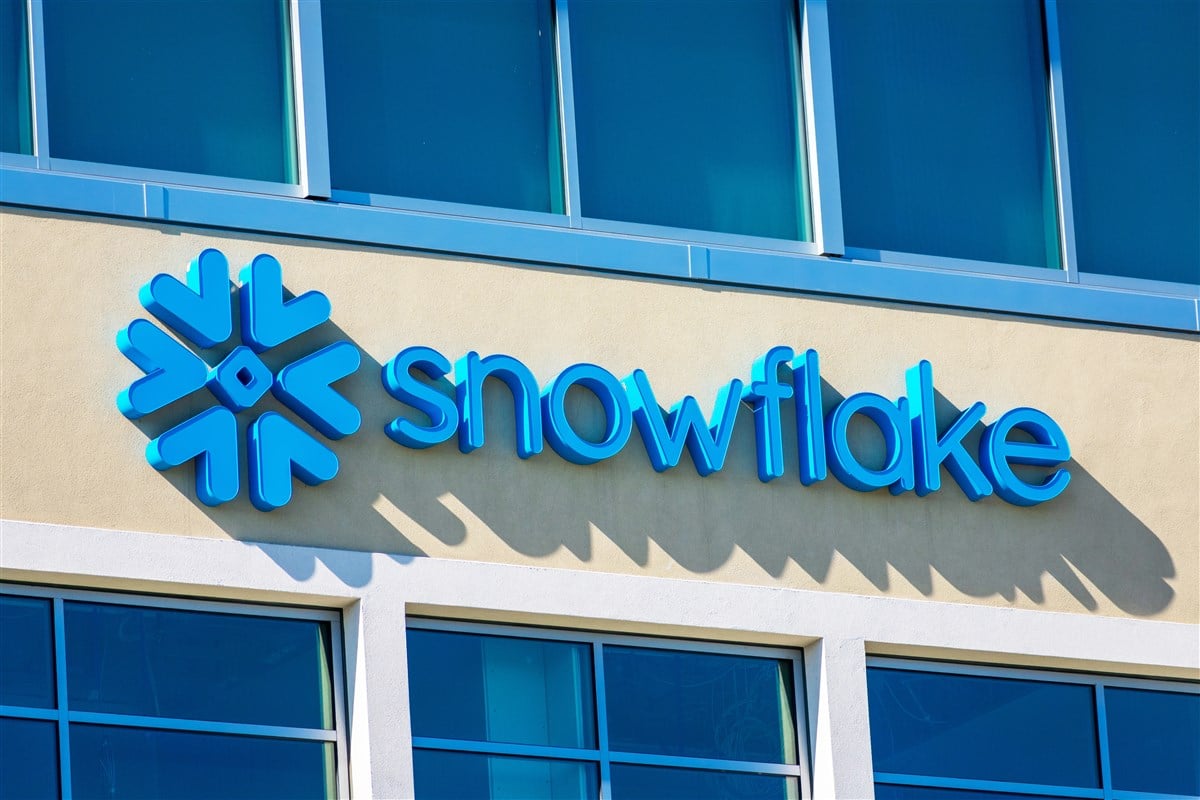Good day,
Thank you for subscribing to the Earnings360 newsletter, your daily source for quarterly earnings news and updates.
Each morning edition contains a wrap-up of today's pre-market earnings announcements and yesterday's earnings announcements after the closing bell.
Before we send you your first edition, please take a moment to confirm your subscription below. We will not be able to send your newsletter until you confirm your subscription.
Confirm Your Subscription Here
The Earnings360 Team
Today's Bonus News Snowflake Stock Is on Fire—It's Still Not Too Late to BuyWritten by Jordan Chussler. Published 10/30/2025. 
Key Points - SNOW shares are up nearly 70% YTD but remain down around 32% from their all-time high.
- Although the company’s data cloud services continue to be in demand, it is still operating at a loss.
- Still, 86% of analysts who rate Snowflake assign it a Buy rating as the company is a key beneficiary of the AI and cloud migration trends.
With the proliferation of artificial intelligence (AI) and the data storage it requires, numerous industries are emerging as pick-and-shovel plays by providing essential ancillary services for the emerging technology. Those span industries from data centers and utility companies to electric infrastructure and cloud storage. That last one—cloud storage—is critical to AI's exponential growth. According to industry consultancy firm Grand View Research, the cloud computing market is forecast to grow at a compound annual growth rate (CAGR) of 20.4% from 2025 through 2030. Much of that growth is driven by AI's processing power and storage requirements. Between tariff chatter, consumer fatigue, and year-end fund moves, markets are restless.
But beneath the noise, something familiar is happening again — the same quiet setups that often appear before new rotations begin.
The pros aren't reacting to headlines; they're studying accumulation patterns, insider flow, and liquidity shifts that hint at where the next real trend could form.
Our new Signal Intelligence Report reveals how to read those footprints before they turn into headlines — and how to avoid the year-end traps catching retail traders off guard. [Get the Free Report + Trade Alerts Now] Beyond AI, companies are increasingly accelerating cloud migration to address needs for large data-set analysis, process automation, and improved efficiency. Cloud platforms also provide advanced, customizable tools and development frameworks that enterprises need to maintain competitive advantages. That's where Snowflake (NYSE: SNOW) comes into play. The company serves as a data warehouse provider while offering a broad suite of cloud services. As Big Tech’s hyperscalers and smaller organizations continue to rely on the cloud, Snowflake is well-positioned to reward shareholders over the long term. Snowflake Isn't Profitable—Yet Despite the stock's run-up in 2025, which has resulted in a nearly 70% year-to-date gain, Snowflake continues to operate at a loss. In fact, the company has seen sizable net loss increases over the past several years. That figure has grown from -$680 million in 2022 to -$1.286 billion in 2024—a more than 89% increase. However, at the same time, its net cash from operating activities has grown more than 772% from $110 million in 2022 to $960 million in 2024. But despite not yet achieving GAAP profitability, there's a clear reason the company is operating at a loss. Snowflake is aggressively investing in growth and market share, focusing on AI initiatives and a long-term strategy that prioritizes expansion over short-term profitability. That approach increases operating expenses now but can pave the way to future profitability. Snowflake's Fortune 500 Clientele Are Improving Its Financials Snowflake's prospects look more plausible given the firm's Fortune 500 clientele. Spanning industries including automotive, finance, healthcare, retail, and technology, Snowflake provides services to many of the biggest names in public and private markets. Some of Snowflake's customers include Amazon (NASDAQ: AMZN), Canva, Capital One (NYSE: COF), Coinbase (NASDAQ: COIN), Deloitte, Exxon Mobil (NYSE: XOM), Fidelity Investments, Netflix (NASDAQ: NFLX), OpenAI, Toyota (NYSE: TM), UnitedHealth Group (NYSE: UNH), and Walmart (NYSE: WMT). Those companies and others rely on Snowflake's cloud-native data platform for storage, processing, analytics, data engineering, and scalable application workloads. The company also operates a data marketplace and data exchange functionality, enabling secure data sharing between organizations. Demand for those services has enabled Snowflake to post consistently improving financials while it focuses on long-term expansion and rising capital expenditures. From 2022 to 2024, net cash from investing increased from $21 million to $191 million, while the company's total assets grew from $6.65 billion to $9.03 billion—a nearly 36% increase. SNOW Is a Buy According to Wall Street SNOW shares are trading nearly 32% below their all-time high (ATH), which the stock hit a little more than a year after its September 2020 IPO. Given its expansion strategy and the cloud services market's projected CAGR of 20.4% through 2030, there's room for the stock to challenge its ATH in the coming years. Last year, the cloud services market was estimated to be worth $752 billion. That figure is forecast to grow to $2.39 trillion by the end of 2030. Meanwhile, the North American market accounts for roughly 39% of the overall market's revenue share. Institutional ownership stands at 65.10%, with buyers (1,023) and inflows ($18.05 billion) outnumbering sellers (566) and outflows ($5.68 billion) over the past 12 months. In the near term, SNOW's short interest is a modest 3.52% of the float. Of the 44 analysts covering Snowflake, 38—or more than 86%—assign the stock a Buy rating. The company is slated to report Q3 earnings on Wednesday, November 19, after the market closes. It will be looking to build on momentum from Q2, when Snowflake beat on both earnings and revenue. It reported EPS of $0.35 versus analysts' consensus of $0.27 and revenue of $1.14 billion—a 31.8% year-over-year increase—beating the consensus estimate of $1.09 billion.
|